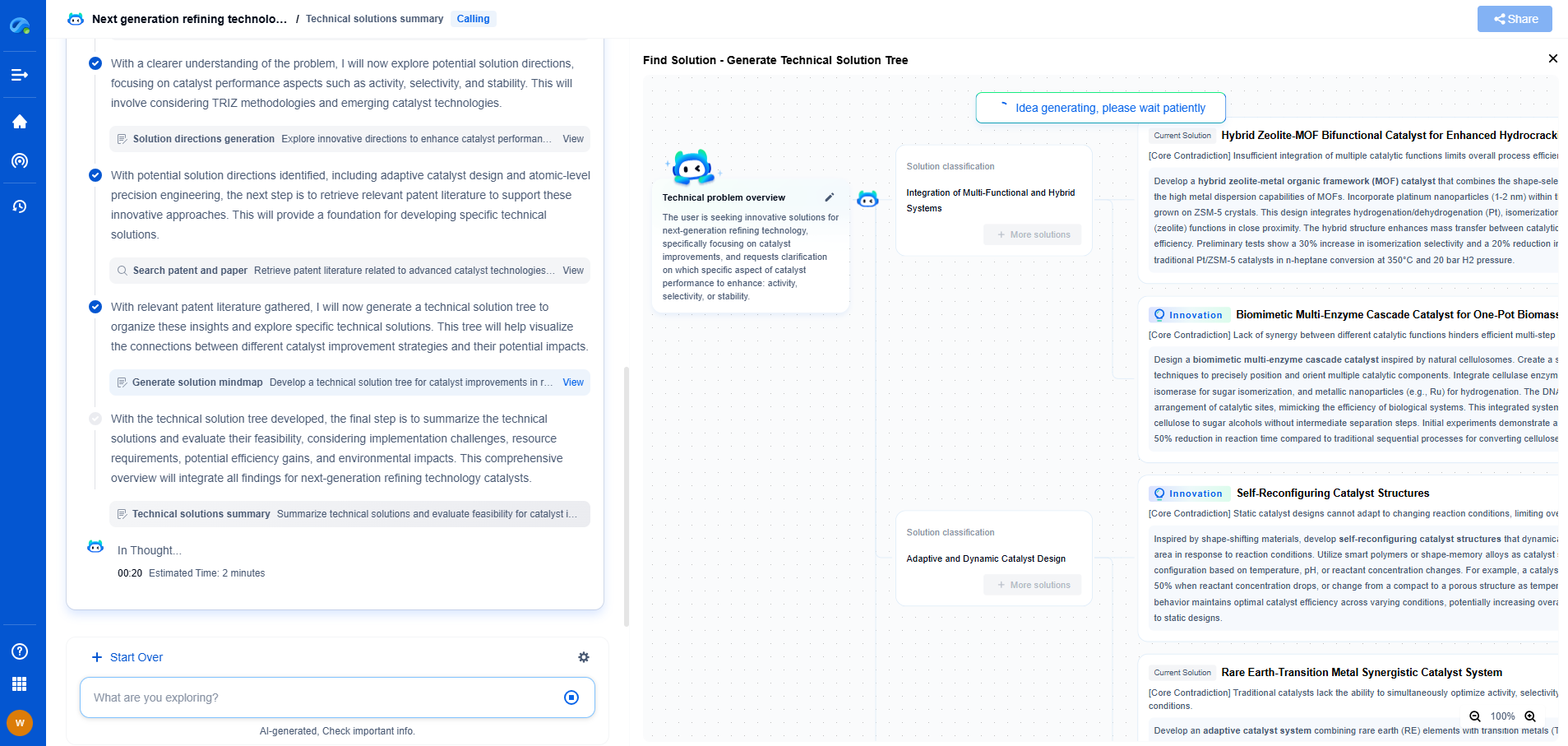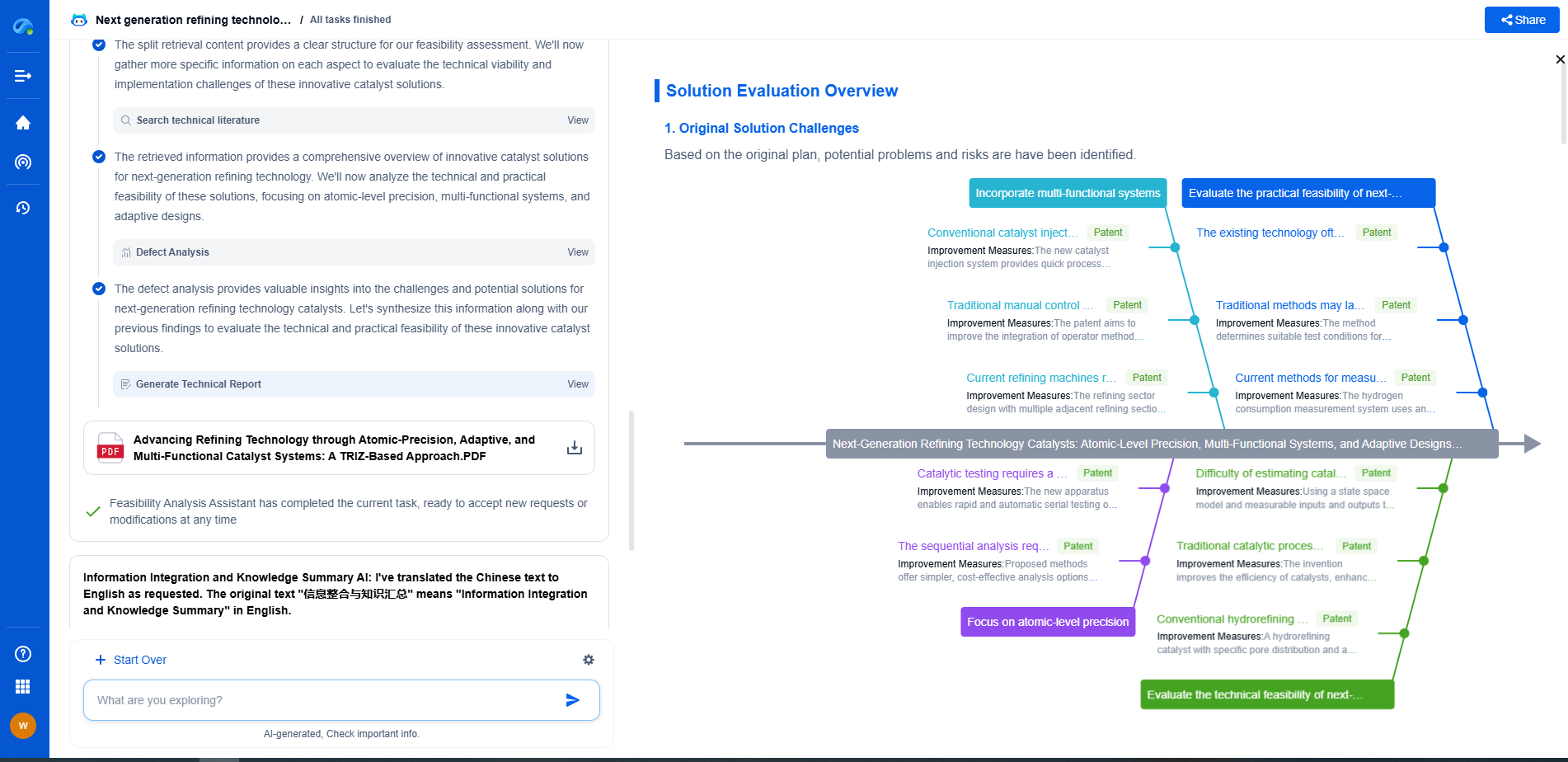Why Yaw Misalignment Reduces Efficiency and How to Correct It
JUN 26, 2025 |
Yaw misalignment occurs when the yaw angle of a wind turbine—the angle between the rotor's axis and the wind direction—is not optimal. Ideally, the rotor should directly face the wind to maximize energy capture. However, due to various factors, including mechanical failures, incorrect calibration, or environmental influences, turbines can often deviate from this ideal alignment.
**Impact of Yaw Misalignment on Efficiency**
When a wind turbine is not properly aligned with the wind, it captures less wind energy, reducing its power output. This inefficiency can lead to significant energy losses over time. Even slight misalignments can result in measurable decreases in performance, as the aerodynamic forces acting on the blades are not fully optimized. This misalignment can also cause increased mechanical stress on the turbine components, potentially leading to higher maintenance costs and reduced lifespan.
**Causes of Yaw Misalignment**
Yaw misalignment can stem from both technical and environmental factors. Common causes include:
1. **Sensor Errors:** Yaw sensors, if not calibrated correctly, may provide inaccurate data, leading to incorrect yaw positioning.
2. **Mechanical Failures:** Issues such as wear and tear in the yaw bearing or yaw drive system can prevent the turbine from accurately aligning with the wind.
3. **Software Malfunctions:** Errors in the turbine control software can lead to improper yaw adjustments.
4. **Environmental Factors:** Changes in wind patterns or sudden gusts can temporarily misalign the turbine, especially if the yaw system is not responsive enough.
**Detecting Yaw Misalignment**
Regular monitoring and maintenance are crucial for detecting yaw misalignment. Operators can use a combination of sensors, data analysis, and periodic inspections to identify misalignment issues. Advanced diagnostic tools and software can provide real-time data on yaw angles, allowing operators to make timely adjustments and optimize turbine performance.
**Correcting Yaw Misalignment**
Correcting yaw misalignment involves several steps:
1. **Calibration:** Regular calibration of yaw sensors ensures accurate measurements and alignment.
2. **Software Updates:** Ensuring the control software is up-to-date can prevent misalignment caused by software glitches.
3. **Mechanical Maintenance:** Routine checks and maintenance of the yaw bearing and drive systems can prevent mechanical failures that lead to misalignment.
4. **Retrofits and Upgrades:** In some cases, installing more advanced control systems or actuators can improve the responsiveness and accuracy of the yaw mechanism.
**Preventive Measures and Best Practices**
To maintain optimal turbine performance, operators should adopt a proactive approach to prevent yaw misalignment. This includes:
- Implementing regular training programs for maintenance staff to recognize early signs of misalignment.
- Establishing a routine maintenance schedule that includes calibration, inspection, and software checks.
- Utilizing advanced sensor technology and data analysis to track performance metrics and identify potential issues before they lead to significant inefficiencies.
**Conclusion**
Yaw misalignment is a critical factor that can significantly impact the efficiency and lifespan of wind turbines. By understanding the causes and effects of yaw misalignment, operators can implement effective strategies to correct and prevent it. Through regular maintenance, accurate calibration, and the use of advanced technologies, the wind energy industry can maximize the output and efficiency of wind turbines, contributing to a more sustainable and cost-effective energy future.
Empower Your Wind Power Innovation with AI
In the fast-evolving landscape of wind turbine technology—where aerodynamic optimization, generator efficiency, and structural innovation are critical—staying ahead requires more than just expertise. It requires intelligent tools that accelerate R&D and protect your competitive edge.
Patsnap Eureka is your AI-powered research assistant, designed specifically for innovators like you working at the forefront of Wind Motors. Whether you're analyzing blade design trends, exploring novel gearbox architectures, or navigating complex global patent landscapes, Eureka streamlines the entire process with precision and speed.
👉 Experience how Patsnap Eureka can revolutionize your R&D and IP strategy. Request a demo today and power up your next breakthrough.
- R&D
- Intellectual Property
- Life Sciences
- Materials
- Tech Scout
- Unparalleled Data Quality
- Higher Quality Content
- 60% Fewer Hallucinations
Browse by: Latest US Patents, China's latest patents, Technical Efficacy Thesaurus, Application Domain, Technology Topic, Popular Technical Reports.
© 2025 PatSnap. All rights reserved.Legal|Privacy policy|Modern Slavery Act Transparency Statement|Sitemap|About US| Contact US: help@patsnap.com

